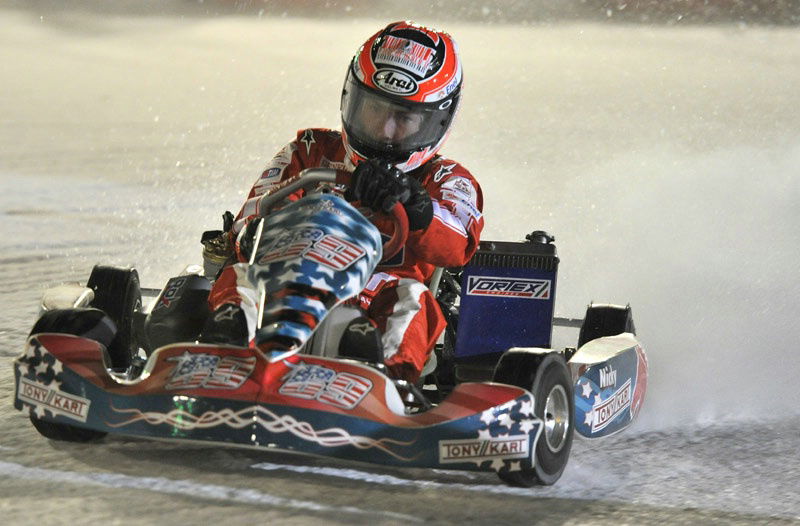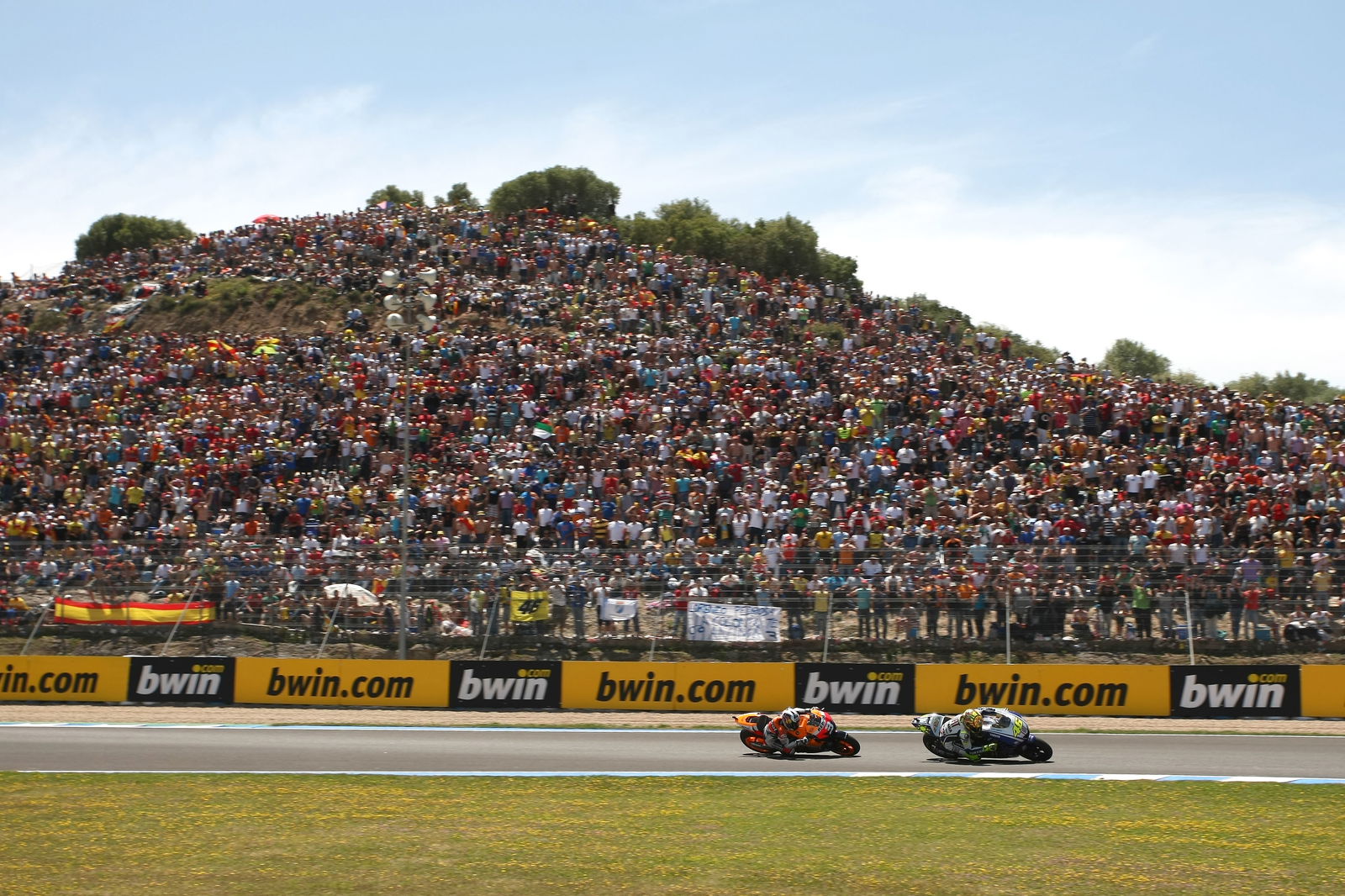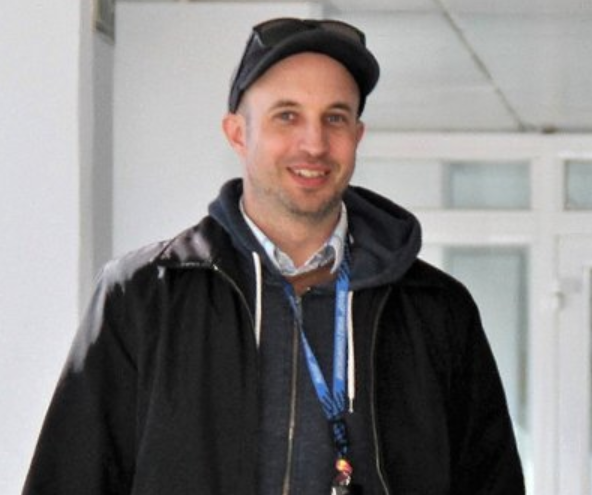Ducati talks GP10.
Wednesday saw the official unveiling of Ducati's 2010 MotoGP contender, the Desmosedici GP10, at the Italian ski resort of Madonna di Campiglio.
After joining factory riders Casey Stoner and Nicky Hayden in revealing the design against the snowy backdrop of the Dolomites, Ducati Motor general manager Claudio Domenicali met with the press to discuss the main features of the machine.
Domenicali divided the main GP10 changes into two groups - those inspired by the new rules and those of a pure performance-enhancing value.

Wednesday saw the official unveiling of Ducati's 2010 MotoGP contender, the Desmosedici GP10, at the Italian ski resort of Madonna di Campiglio.
After joining factory riders Casey Stoner and Nicky Hayden in revealing the design against the snowy backdrop of the Dolomites, Ducati Motor general manager Claudio Domenicali met with the press to discuss the main features of the machine.
Domenicali divided the main GP10 changes into two groups - those inspired by the new rules and those of a pure performance-enhancing value.
The big change in terms of the 2010 technical rules is the engine change limit, which restricts each rider to just six new engines throughout the 18-round season, to try and reduce maintenance costs.
Domenicali revealed that all of the Desmosedici's main internal parts had to be modified in order to triple the engine life - from one engine per race to one engine for three races - whilst reducing performance by as little as possible.
"The main changes to the bike are based on the rule changes, so the major part of the work was done precisely to make it perform better using only six engines for the entire championship," he said.
"It's a very important difference, because we were used to using more-or-less one engine per race, so to switch from 18 engines to six is a very important adjustment. To go 1,600 kilometres with an engine that goes over 19,000 rpm isn't a simple assignment.
"All of the main parts were redesigned - pistons, rods, crankshaft, the basics. It's an engine with which our main objective was to minimize the loss of power to increase durability."
Having an engineering background, some might expect Domenicali to regret the need to 'tone down' the MotoGP prototypes. Instead, he appears to be in favour of the rules, which he thinks will help with production motorcycle design.
"[The engine limit] was a change that will be very useful and interesting, also because normally in racing, durability isn't the principal objective," he said.
"Perhaps this new objective has enabled us to perform a series of experiments that will also be interesting for the new production engines that we're developing because at this point they become almost comparable.
"For a production engine, 2,000 kilometres of track use is a severe challenge so we start to think that the race engine durability is comparable with production engines."
With the increased reliability demands certain to hurt outright performance to some extent, it might be surprising that Ducati has decided - after successfully (for Stoner at least) running a 'screamer' engine design for the first three years of 800cc competition - to switch to a 'big bang' firing order for 2010.
Big bang engines were used throughout the MotoGP field by the end of the 990cc era, when horsepower was in excess, but when the capacity was cut to 800cc for 2007 Ducati (unlike its Japanese rivals) decided horsepower would once again be king and opted for an even-firing engine - with which Stoner stormed to world championship victory.
Despite the increased reliability required for 2010, Ducati now feels that it is generating more than enough horsepower from its V4 powerplant - and has decided that the increased rideability provided by 'big bang' technology now outweighs the potential power loss.
Ducati's decision should mean that only Honda, which switched to a screamer during 2007, will start the 2010 season without a big bang engine.
"The second big news isn't related to the rules, but to our attempt to make the bike more rideable. This has to do with the firing order," confirmed Domenicali. "We have a motor that, since the switch to 800s, utilized a screamer setup.
"This has permitted us to have maximum power, which was very important and was probably fundamental with the results that we've had in 2007, 2008 and 2009, but at a certain point, we began to wonder whether it could be worthwhile to re-test a way that we'd already followed in the past.
"The last 990cc motors that we made in 2005 and 2006 used a big-bang firing order, and this gave us important rideability. We re-tested that way, first trying it on the dyno, then with Vittoriano Guareschi in his previous role as test rider and then with Nicky and Casey.
"We think we have a bike for 2010 with better traction, and that therefore makes it easier for us to find a good setup."
Hayden, as well as satellite riders Mika Kallio, Aleix Espargaro and Hector Barbera, will be hoping that the big bang move can help them replicate Stoner's form - the Australian having won 20 MotoGP races since 2007, compared with just one victory by the other Ducati riders.
For more on big bang, and why it is used in MotoGP, read this 2008 interview with Yamaha boss Masao Furusawa (CLICK HERE).
Despite the significant engine changes, the Desmosedici chassis has not been neglected, with considerable changes made to the rear part of the bike. Ducati riders switched between metal and carbon fibre swingarms during 2009, but the 2010 swingarm on show was of carbon fibre.
"Another part of the work was dedicated to the chassis. In the pursuit of ease of use, we've worked to eliminate the bike's squatting, which is why the entire rear portion of the bike was redesigned," said Domenicali.
"This bike has a rear structure that carries the rider - which we call the seat support - and that also supports the swingarm. That part was redesigned to have six mounting points instead of four; this makes the bike more rigid in a way and it guarantees better rideability and improved rigidity.
"With respect to the bike we introduced last year, this bike is also aesthetically different because of the redesigned fairing but we already saw that at Estoril," he added of the aerodynamics.


